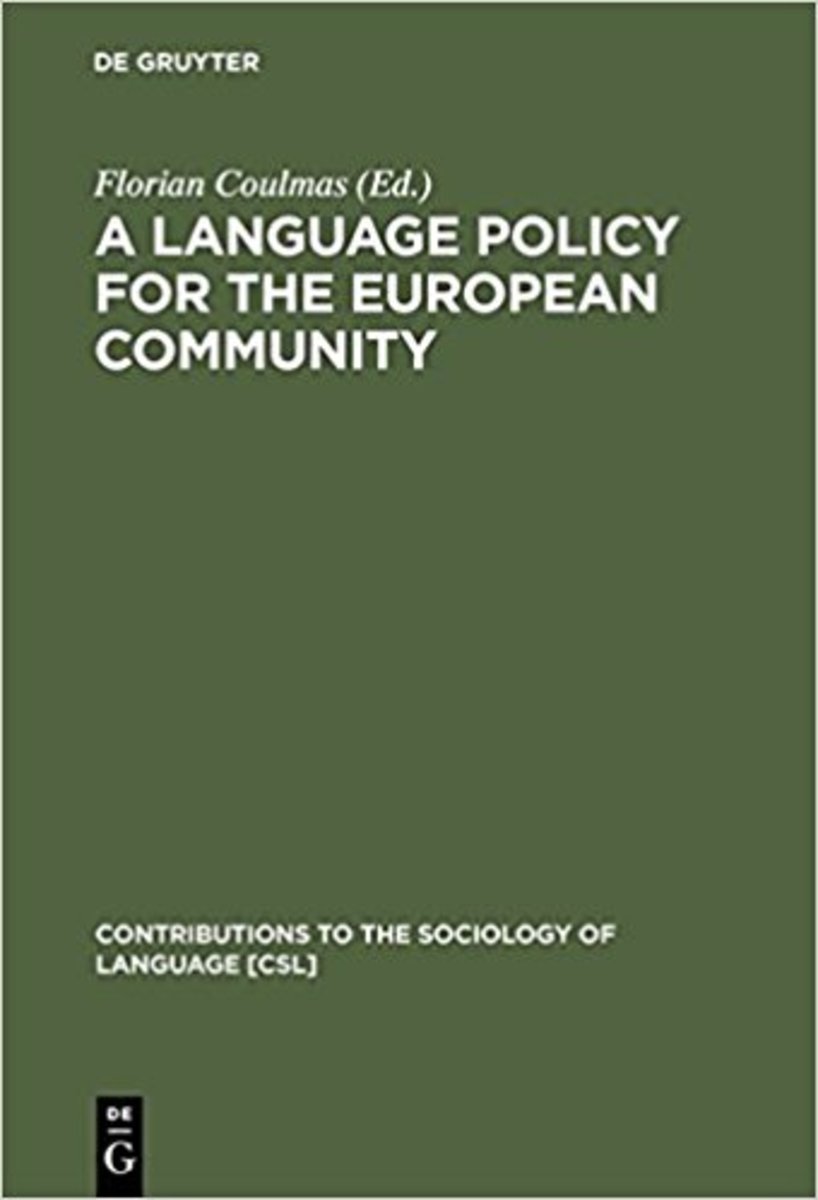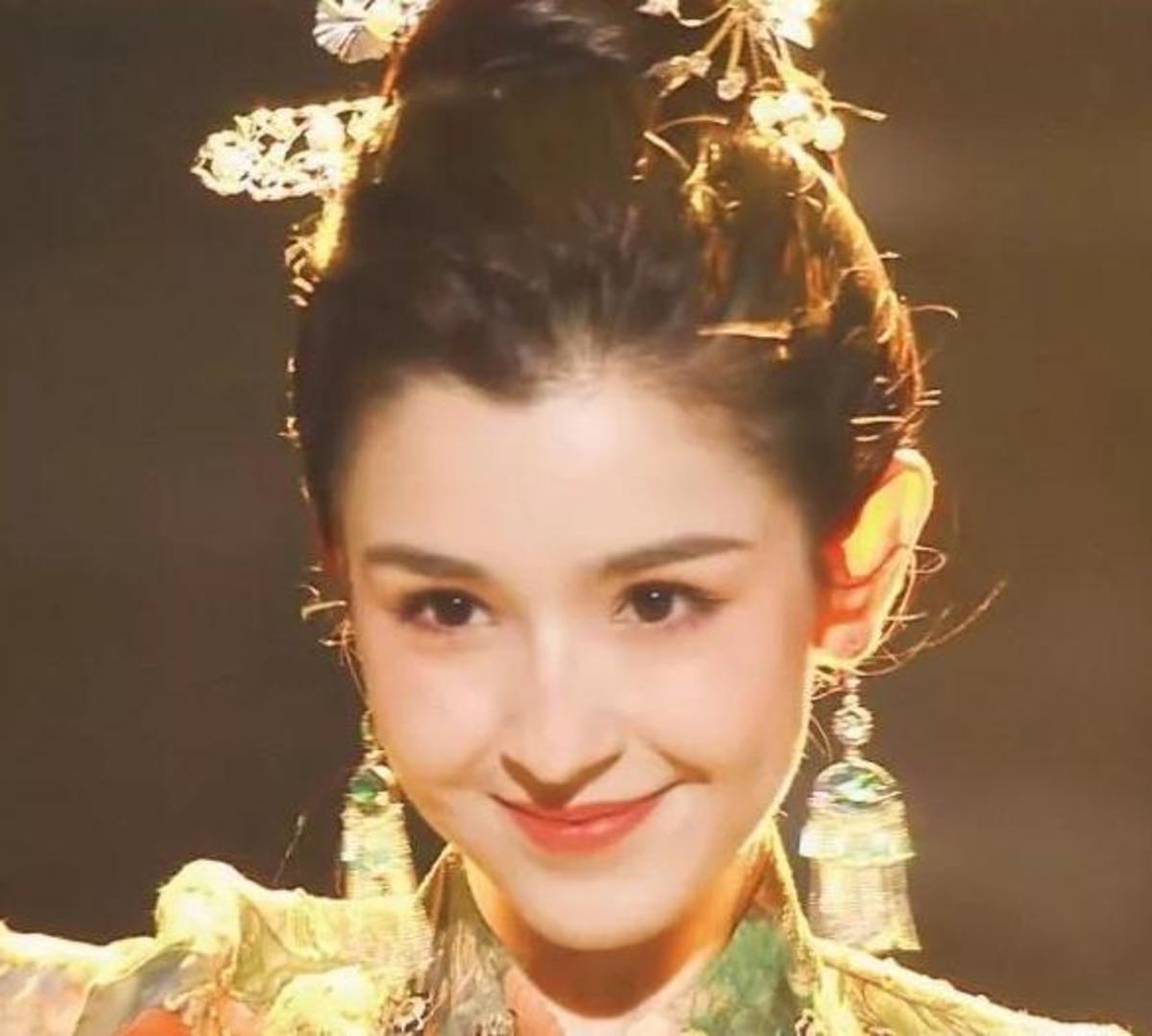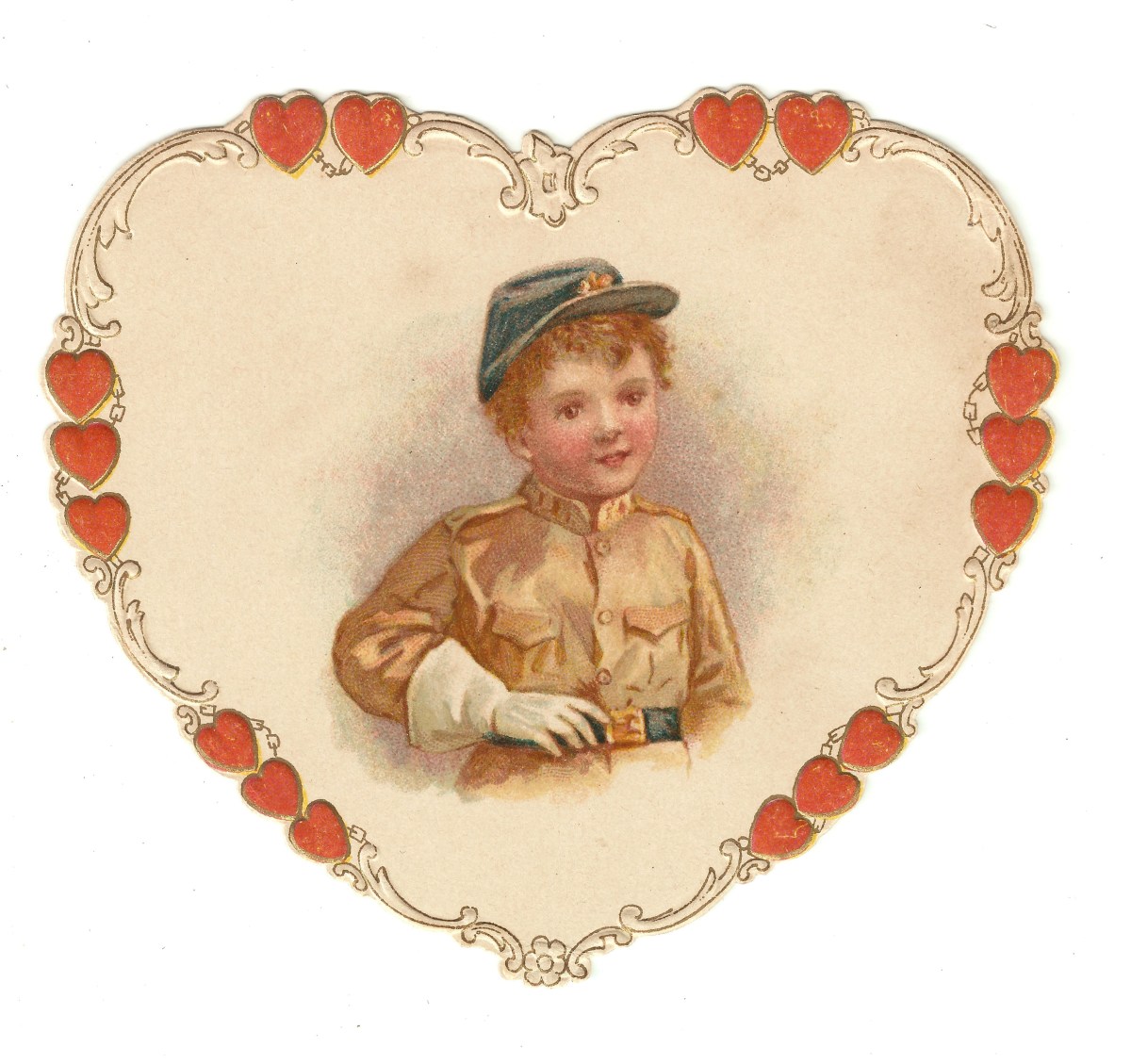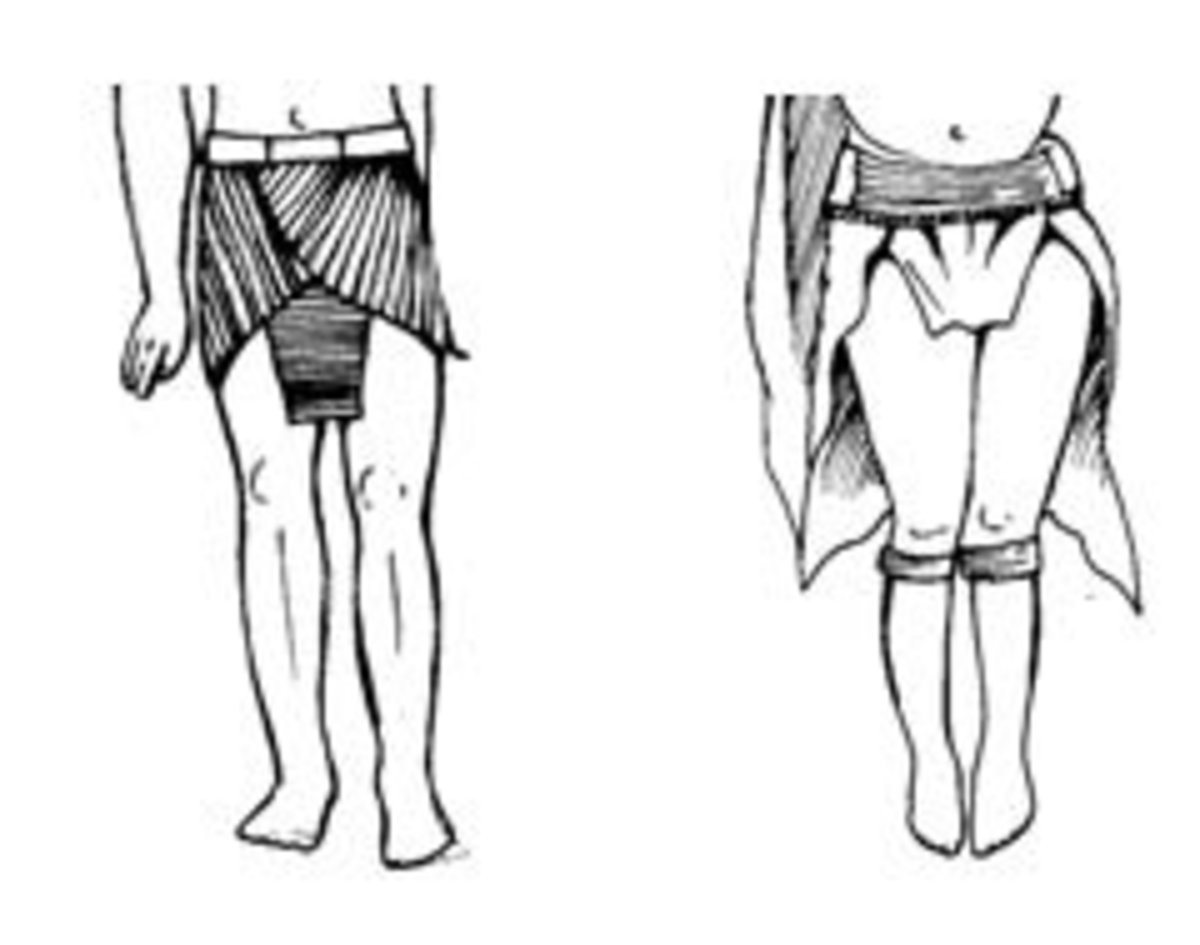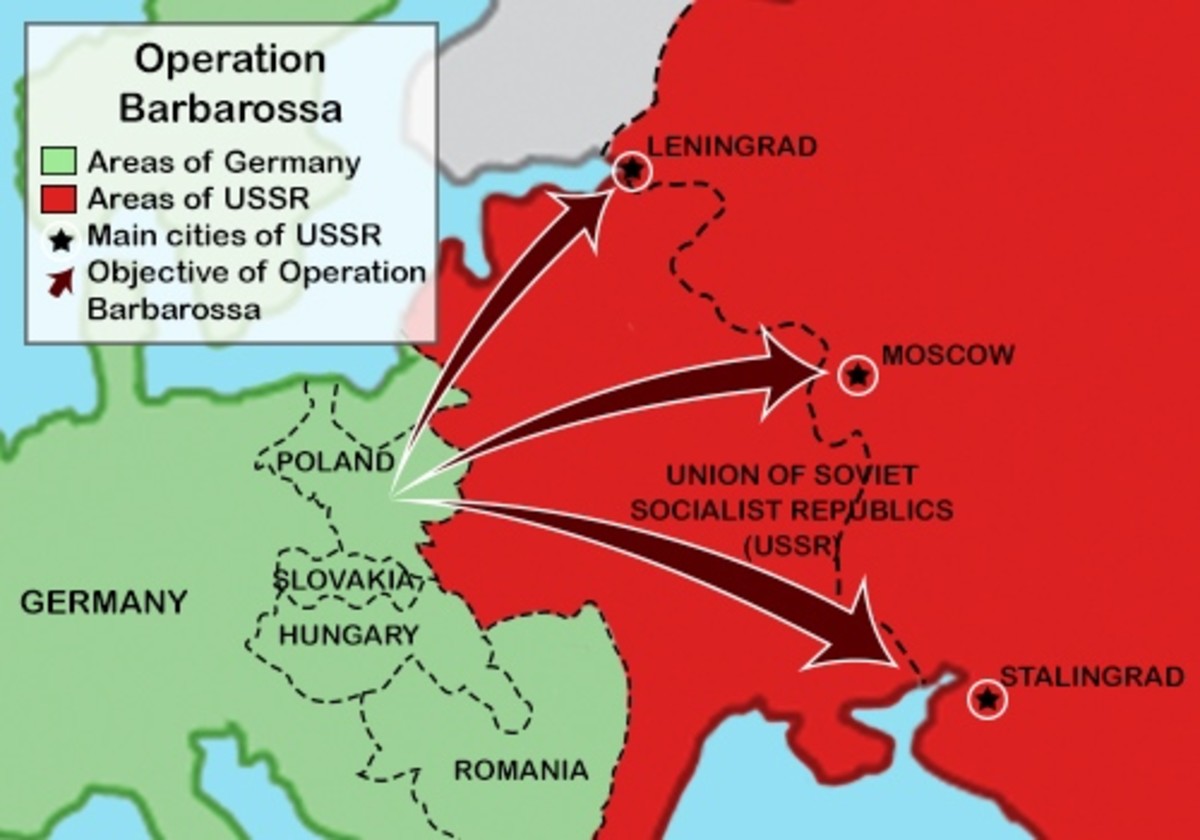Chinese History | Hainan Ethnic Minorities
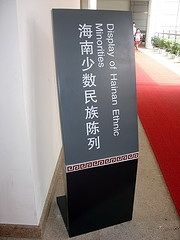
Hainan Provincial Museum Ethnic Minorities Exhibition of Chinese History
"The minorities of Hainan mainly inhabit the Central and Southern areas of Hainan Island. With a population of over 1.4 million, the Li, Miao and Hui nationalities have been living on Hainan Island for generations. They have worked hard overcoming many difficulties and, together with the Han nationality, have jointly developed and built Hainan Island, and created a long history and a unique culture.
The Li nationality is the earliest of inhabitants on Hainan Island. Their ancestors were from Luo Yue, a branch of the Bai Yue nationality, migrating to Hainan Island 3000 years ago successively. The Miao nationality probably moved in from Guangxi and other places as the ordinary soldiers of the Ming Dynasty, and settled down in Hainan ever since. The Hui people mainly live in Sanya Phoenix Town, and many of their ancestors were from Zhancheng (Central and Southern areas of today's Vietnam) during the Song and Yuan Dynasties.
Under Hainan's unique natural environment and historical conditions, the Li, Miao and Hui nationalities have developed their economy and cultures with their own characteristics. The Li nationality has a long history of Lijin Brocade and textile skills, the unique boat-shaped houses and abundance of folk culture and arts. The hand-made clothing of the Miao nationality is solemn in colour and delicate in craftsmanship. Their religious belief is to worship their ancestors, and they believe in a Pan King (Emperor). The Hui nationality is engaged in marine fishing, transportation and trade etc, and they are devout Islamic people. Hainan people of all ethnic groups have achieved a lot in the development of Hainan Island, the defence of Southern borders and the establishment of pioneering water traffic, and have made a major contribution to social development." ~ Hainan Museum
Image: drs2biz | Lens Updated: August 29th, 2012 @ 11:30 am Beijing time.
So, Where is Hainan Provincial Museum? - I want to take a look at this exhibition... where do I find it?
The Hainan Provincial Museum is located in Haikou, the capital city of Hainan Province in the People's Republic of China. The street address is No 65 Guoxing Ave, Haikou, Hainan - 570203 (Opposite Provincial Communist Party Committee Offices).
Flag of the Li and Miao Ethnic Groups of Hainan
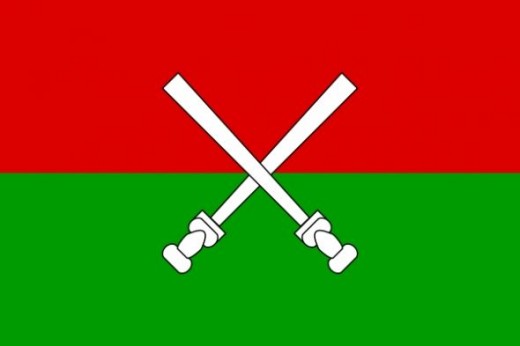
Image: Wikimedia
Main Foyer to Hainan Ethnic Minorities Exhibition
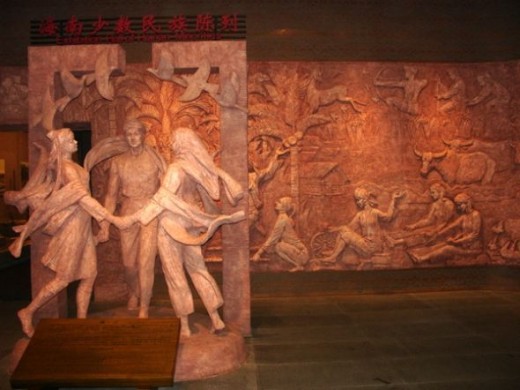
The elaborate wall sculpture and statue at the entrance foyer to the Hainan Ethnic Minorities Exhibition has an immediate visual impact on the visitor. All the drudgery of weekly routine is removed from the mind and you are transported to another lifestyle by the rural images presented in this display.
The activities of the groups depicted here show a simple but enjoyable lifestyle. This foyer setting is a great introduction for the displays inside the exhibition hall.
Add Your Comments
Leave a comment in our Guest Book

The Ways Hainan Minority People Make a Living
The main means of livelihood of the Hainan minorities is agriculture, gathering, fishing and hunting. Li and Hui nationalities living along the coastal areas are good at exploiting marine fisheries. Their living is made as conditions permit, making full use of the natural tropical resources.
Ethnic Minorities Making a Living - Agriculture - A diorama on agriculture in Hainan Provincial Museum
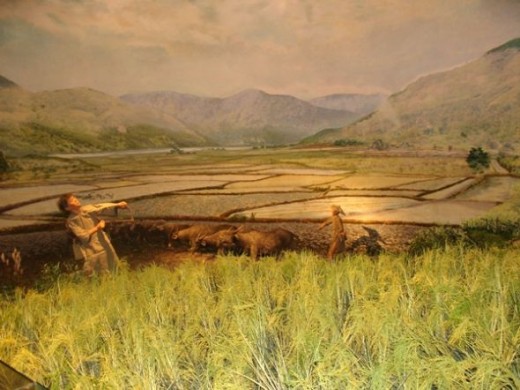
Due to the differences of natural and geographical conditions and the social development of minority areas, Hainan minorities were mainly engaged in agricultural production activities with traditional agricultural production ways such as "Kan Shan Lan" (slash-and-burn farming), oxen stamping on the field or ploughing.
Ethnic Minorities Making a Living - Hunting - A diorama on hunting in Hainan Provincial Museum...
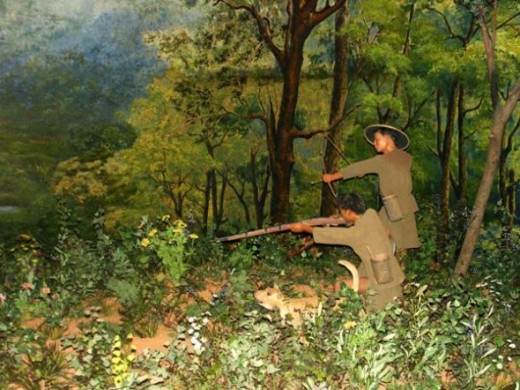
Hunting is one of the important sources of economic life for the Li and Miao people. In the slack season, their villages will organise their people to go hunting in the mountains with their dogs to encircle and hunt. The prey is equally distributed, and the hunting dogs get their own share. People learn, from their century old hunting experiences, many ingenious methods to hunt wild animals such as digging traps, setting loops, inserting bamboo prods and laying triggers.
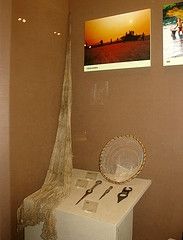
Ethnic Minorities Making a Living - Fishing
Most of the Li People live in places near narrow river valleys with many shoals and rapids, where the fishery resources are abundant. The Miao people, living along the coastal areas, are also very good at fishing. The image to the right displays typical fishing nets and tools used for fishing by these minority groups.
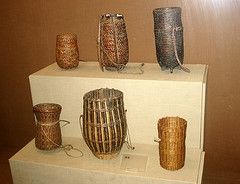
Ethnic Minorities Making a Living - Gathering
Hainan Island is located in a tropical area, with long summers and no winter. The rainfall is plentiful and there are abundant plant resources, which are natural gifts for the Li and Miao people.
When people go out, they always carry their waist baskets to gather wild fruits or dig out plant roots or tubers for food.
Add Your Comments
Leave a comment in our Guest Book
Hainan Ethnic Minorities - Cottage Industries
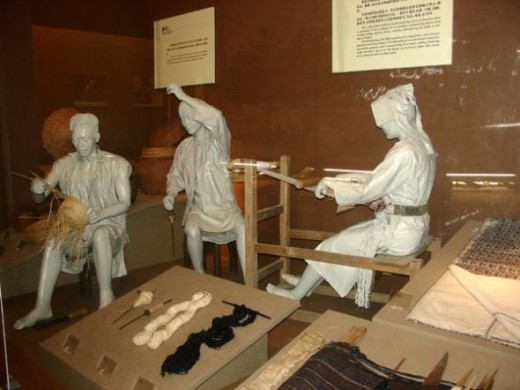
Hainan minorities' cottage industry mainly includes carpentry works, weaving, textiles and pottery. The Li nationality was one of the earlier nations in China that made good use of cotton to weave cloth. They are good at craftsmanship with Li characteristics. Their craftsmanship spread to the mainland through Huang Daopo early in the Song and Yuan Dynasties, which promoted the development of the cotton and textile industry in China.
Weaving - All kinds of woven products are important in the daily life of Li and Miao minorities. People use bamboo, vines and grass-like materials to weave different kinds of living appliances. They are practical in function and a simple design with beautiful shapes.
Textiles - The Li Nationality's traditional textile technology passes on from generation to generation. It has a complete set of systematic craftsmanship processes from ginning, balling, spinning, dyeing, weaving and embroidering to brilliant Li brocade.
The batik printing of the Miao nationality has a long history, with strong national and local characteristics. Batik printing is one ancient traditional printing method, generally used in manufacturing women's clothing, head-wraps, girdles, bed sheets etc. They include motifs of flowers, birds, fish, insects, rivers, mountains and so on, from nature.
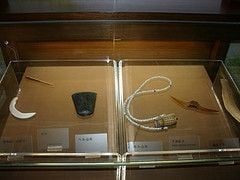
Ethnic Minorities Cottage Industry - Bone Utensil Manufacture
The Li nationality people, living in the mountainous areas, use animal bones to manufacture all kinds of living utensils and production implements, some of which are carved with unique ethnic patterns.
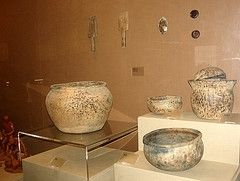
Ethnic Minorities Cottage Industry - Pottery
A main part of the cottage industry of the Li nationality is to make pottery, which is commonly undertaken by women. The pottery is sandy pottery. The pots are plain, with few line decorations and often include black spots on the surface.
Muddy traces can still be seen on the inner wall, and some are not well-structured in shape. There are only a few types of pot, but they are widely used in everyday life, mainly as cooking utensils and containers.
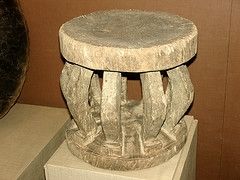
Ethnic Minorities Cottage Industry - Carpentry
The Li and Miao living environments have promoted a characteristic "single log" culture. They use one log, without nailing or mortising, to manufacture wooden items. This shows practical style with a simple, dignified and elegant design.
Add Your Comments
Leave a comment in our Guest Book
Hainan Ethnic Minorities - Material Life
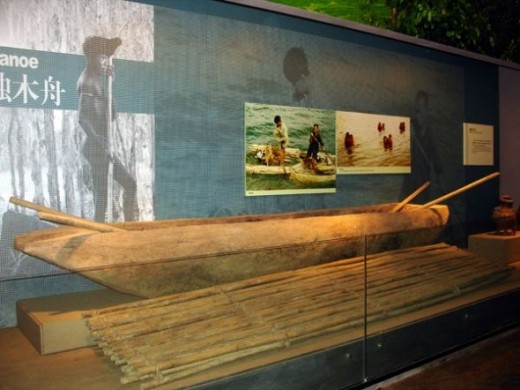
With the influence of the tropical island environment and the economic model, the material life of Hainan minorities has unique characteristics, such as sun-stroke prevention and typhoon proofing. The beautiful and elegant local clothes, the custom of eating rice and fish, the boat-shaped anti-typhoon dwellings, and preference for water transport are all characteristic of these people. Calabash ships and ox & cart transport modes have preserved the relics of the Guyue people.
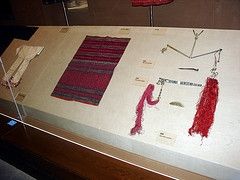
Ethnic Minorities Material Life - Li Clothing
According to the differences in living areas, biological environment, living customs and language, there are 5 major branch dialects in the Li nationality. These dialects are the Ha, Ji, Run, Sai and Mei Fu dialects.
The traditional clothing of these five dialects are various, bright, unpredictable and beautiful. Some of the larger dialects contain several smaller ones, and the clothing is also definitely different from each other.
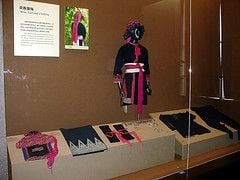
Ethnic Minorities Material Life - Miao Clothing
Miao national clothing preserves its strong national characteristics with blue and dark cotton cloth as the main raw material, and is famous for its textile techniques in batik, embroidery and brocade weaving decorated with flowers, birds and animals.
Besides weaving and processing a small amount of cloth, most of their clothing consists of the white cloth bought from the market, and then sewn and processed after printing and dyeing.
Ethnic Minorities Material Life - Hui Clothing
Hui dressing customs are unique in style, and the people place a premium on black, white, blue and green colours. Because of long term coastal living, the women's clothing has its own national characteristics, as does the coastal fishing people.
Ethnic Minorities Material Life - Food & Drink
Li and Miao minorities have three meals a day. They take rice as staple food, mixed with coarse cereals: sweet potatoes, corn tapioca etc. Wine is an indispensable drink for the people in daily life, which is usually home brewed.
5-Colour rice is a typical food of the Miao. The rice has 5 colours: red, yellow, blue, white and black. The colours are made from plant juices mixed in a sticky rice as natural pigments. The rice is then braised in a special wood utensil.
The Hui nationality scrupulously abide by Islamic Canons. They are not allowed to eat pigs, dogs and cats. Rice and tuberous crops are their main foods. Beef, mutton, poultry, seafood and vegetables are their secondary nourishment.
In all minority groups, as in mainstream Chinese communities, Both men and women favour tea, and regard it as an important item in their life.
Ethnic Minorities Material Life - Making Wine
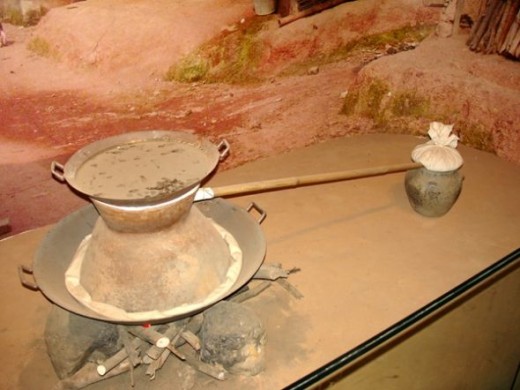
The Li folk's traditional method is to braise their wine. The process is as follows:
1. Cook or steam the raw materials (sweet potato cassava, rice etc) to well done.
2. Cool down the mixture.
3. Mix well with alcohol cake powder (yeast) after cooling and leave to ferment.
4. Pour into boiler covered with wine steaming vessel and stew for about 2 hours.
5. The wine condenses and flows into a wine jar.
This wine, brewed by the Li nationality people, is sweet and delicious. It is mellow and fragrant and relaxes the muscles and stimulates blood circulation, improving fitness.
Li and Miao minorities mainly live among the high mountains criss-crossed by rivers and streams. People make their means of transportation suitable to different geographical surroundings with local materials. This applies to land and water transport alike.
Ethnic Minorities Material Life - Li Village
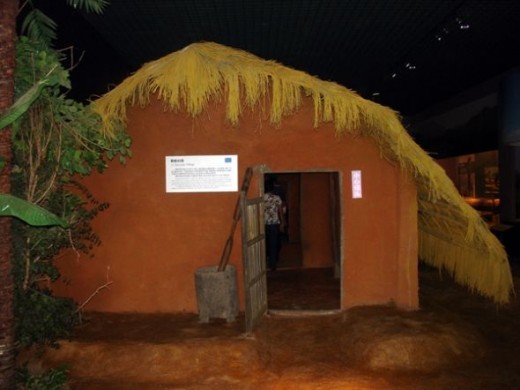
Li people usually build their villages on a small plain in a valley, a river valley table-land, a gently sloping hillside, near farmland, rivers, streams or higher terrain with a slight slope. The villages are surrounded with green bamboo, and overlapping trees. People cannot see the dwellings from the outside of the village, but tropical rural scenery instead. These are the landscape features of a Li residence.
The Li's traditional dwelling is like a boat cover, a hemi-circular canopy supported with timber poles and bamboos, covered with a couch grass roof. As a result, it is called a "Boat-shaped House".
Ethnic Minorities Material Life - Miao Village
The Miao's traditional dwellings are mainly of timber and greenery structure. The common construction materials are couch grass, wooden battens, bamboo, red-and-white rattans etc.
The pillars are usually solid, durable, high-quality wood from crythrophloeum ferdii trees. The traditional houses are usually built with cogon grass.
Ethnic Minorities Material Life - Hui Village
The Hui national dwellings retain Islam's style, usually with a plaque on the wall of the front door bearing the inscription Safe in Arabic. The traditional house is gaudy, but not fastidiously so, and usually has couch grass for roofing.
Indoors, there is a reception room, bedroom and kitchen, each with a single room design. They also usually have a duck hutch and a rabbit shelf outside of the house.
Ethnic Minorities Material Life - Music & Dance
Like any culture around the world, the Hainan Ethnic Minorities enjoy music and dance to celebrate special occasions. The craftsmanship displayed in their instruments gives evidence of the importance of this aspect of their social life.
The history and mythology of the Li people has traditionally been passed on through song, due to the absence of a written language. According to the type of ceremony being represented, they reflect a variety of structure and composition. Courtship, weddings, funerals and sacrificial rituals all have their musical accompaniment in Li society.
A bamboo flute, held vertically and blown with the nose, is commonly used by the Li. Dances include the pole and coin dance, the rice pounding dance and firewood chopping dance. This popular dance is where performers jump over two bamboo poles which are held apart and quickly brought together in time with the music.
The Miao readily enjoy song and dance and express their culture through popular, non-rhyming ballads that are easily understood, and vary in length from a few lines to many thousand. Their favourite musical instrument is the lusheng, made from several bamboo pipes. Others include the copper drum, flutes (particularly the vertically held 'xiao'), mouth organ and suona horn. The bench dance, drum dance and lusheng dance are all popular with the Miao.
Hainan Li Ethnic Minority Sport
"Drive Dog Back Home"
Drive Dog Back Home, much like a hockey game, is a traditional and very popular physical activity of the Li people. Whenever they are free, people start the game on cleared ground with L-shaped branches cut from trees as the "bat".
The original ball made of coconut leaves or straw has now been replaced by a light wooden float ball from a fishing net. The competition is between two teams of equal number of players. Each team member holds a "bat" and the ball is placed in the centre of the ground. When the referee announces the start, the members of the two teams fight for the ball. Whichever team hits the ball across the other's baseline scores.
Add Your Comments
Leave a comment in our Guest Book
Hainan Ethnic Minorities - Religious Beliefs

Hainan minorities have different religious beliefs. The Li nationality preserves more original forms of religion, greatly affected by Taoism of the Han nationality. The Miao nationality abides by the intrinsic national religion, absorbing Taoism from outside sources. Some of the Miao people were converted to Christianity at the beginning of the 20th century. The Hui nationality believes in Islam. The important characteristic of Hainan people's beliefs is coexistence within a multi-faith environment.
Hainan Ethnic Minorities - Primitive Religion
The primitive religions can be divided into different types such as nature worship, totems, ancestor worship and, even the more aboriginal worship of witch-craft! The Li nationality believes that all living things have spirits.
They preferred totem, nature and ancestral worship of the prevailing epoch, and believe that the fortune or misfortune of all living things in the universal world, including people, are forcefully dominated by ghosts. The Miao nationality mainly embraces ancestral and nature worship.
Hainan Li & Miao Ethnic Minorities - Taoism
During the mid Ming Dynasty, Taoism was introduced to Hainan. As some of its teachings were very similar to the ideas of the Li and Miao's original religions and easily understood and accepted by the people, it gradually became a major religion.
Hainan Hui Ethnic Minority - Islam
Hainan Hui people are reverent Islamic believers. They not only maintain a strong faith in their hearts, but have corresponding behavioural requirements. They strictly adhere to their daily religious obligations.
Hui believers of Islam cultivate morality and practise their teachings, accomplishing the five basic religious assignments ('pillars of wisdom'), no matter how treacherous the weather or how busy they are with their daily chores.
Add Your Comments
Leave a comment in our Guest Book
Hainan Ethnic Minorities - Conclusion
"Hainan ethnic minorities are an important component of Chinese national culture, and an imprint on the social and historical development and national spirit of Hainan. For the abundant resources of culture of the Hainan ethnic minorities, we should lay equal stress on inheritance and development. Through researching, screening, discarding and reserving, we should inherit and develop the vital types of ethnic culture."
"The inheriting and spreading of minority culture will play a positive role in carrying out the education of patriotism and national unity, in promoting a united struggle to bring about the common prosperity for all nationalities in the future."
Did you enjoy reading about Hainan Ethnic Minorities? Leave your comments and questions below. Please take the time to rate this lens a "thumbs up" at the top LH corner of the page. If you enjoyed it, you may care to mark it as a favourite as well.
Not a Squidoo member yet? You're missing out on all the fun. Squidoo is free to join and use, and you can even make some money for your favourite charity, our even for yourself (gasp). Go ahead, make my day and make your first lens now.
Image: Greekgeek

